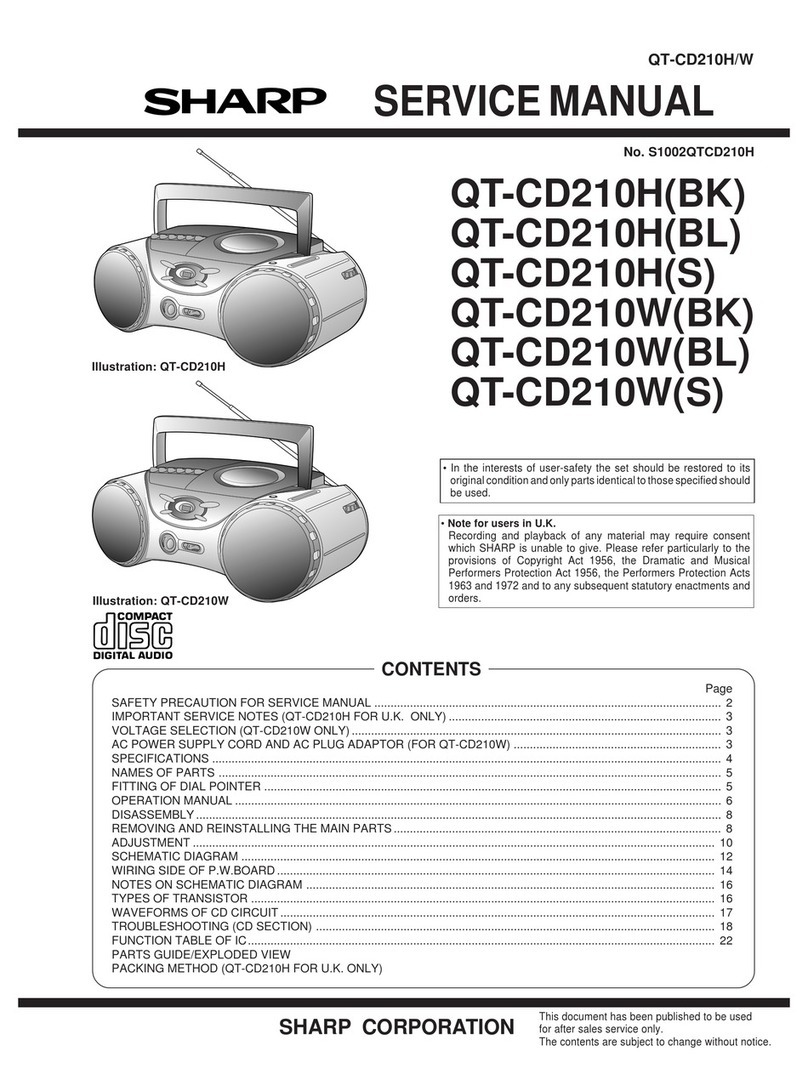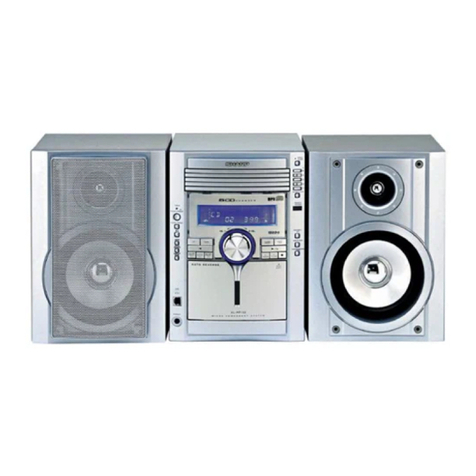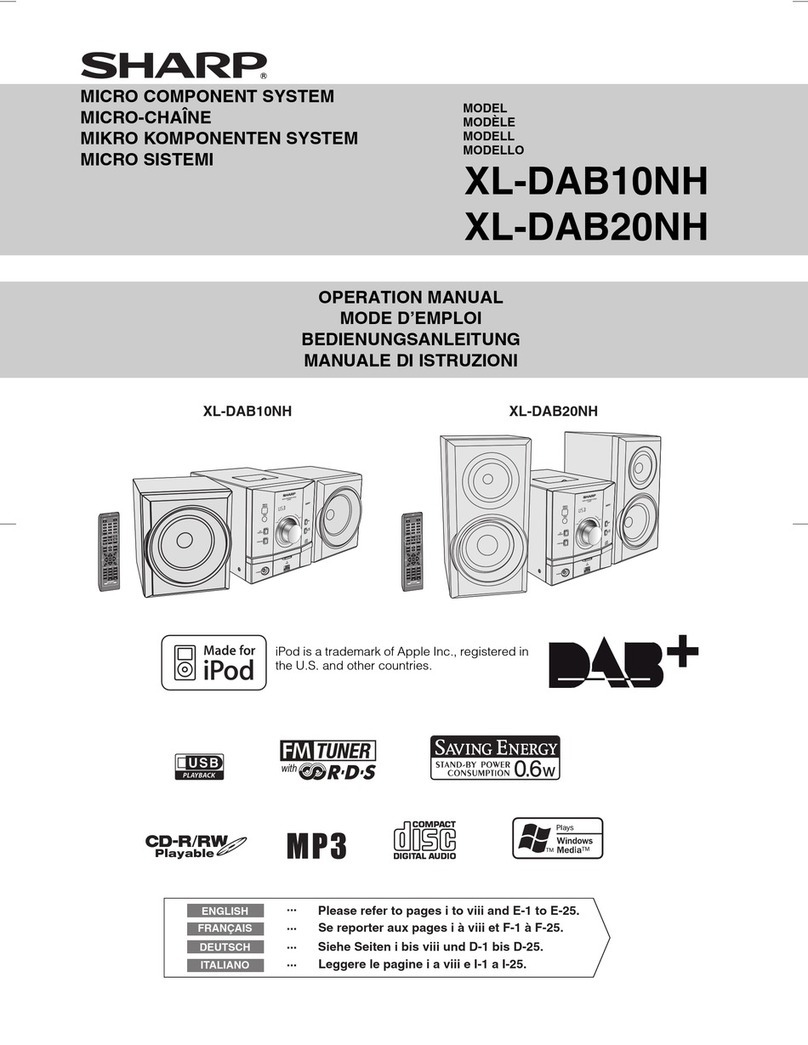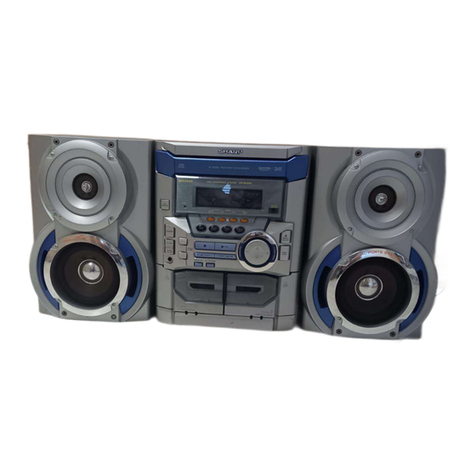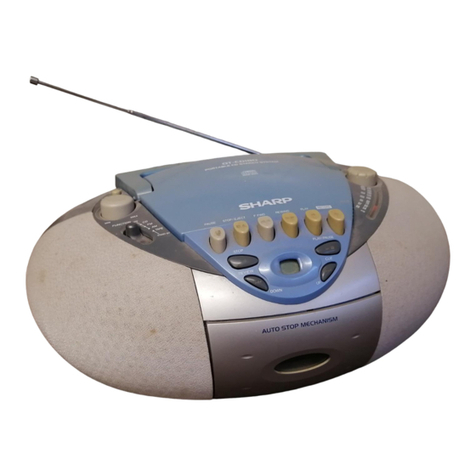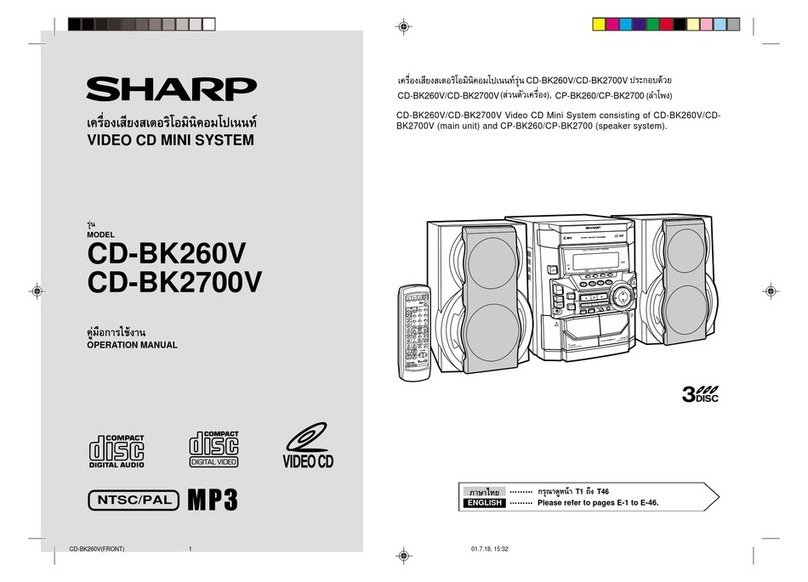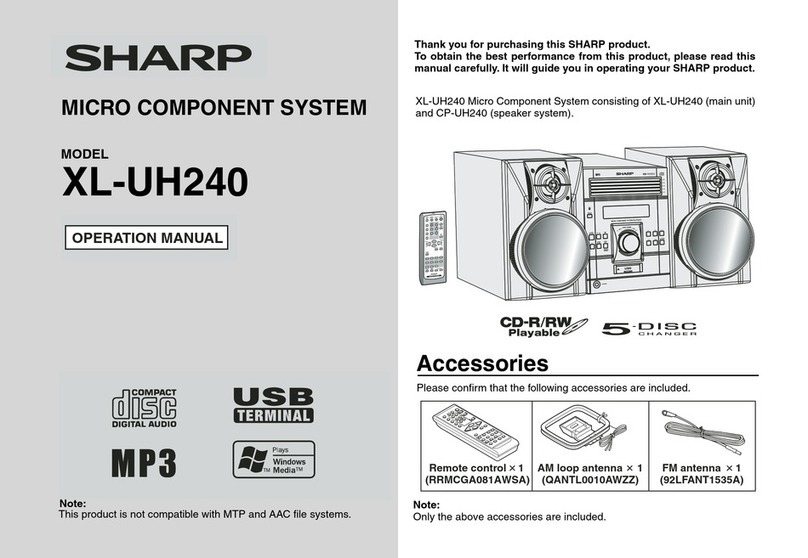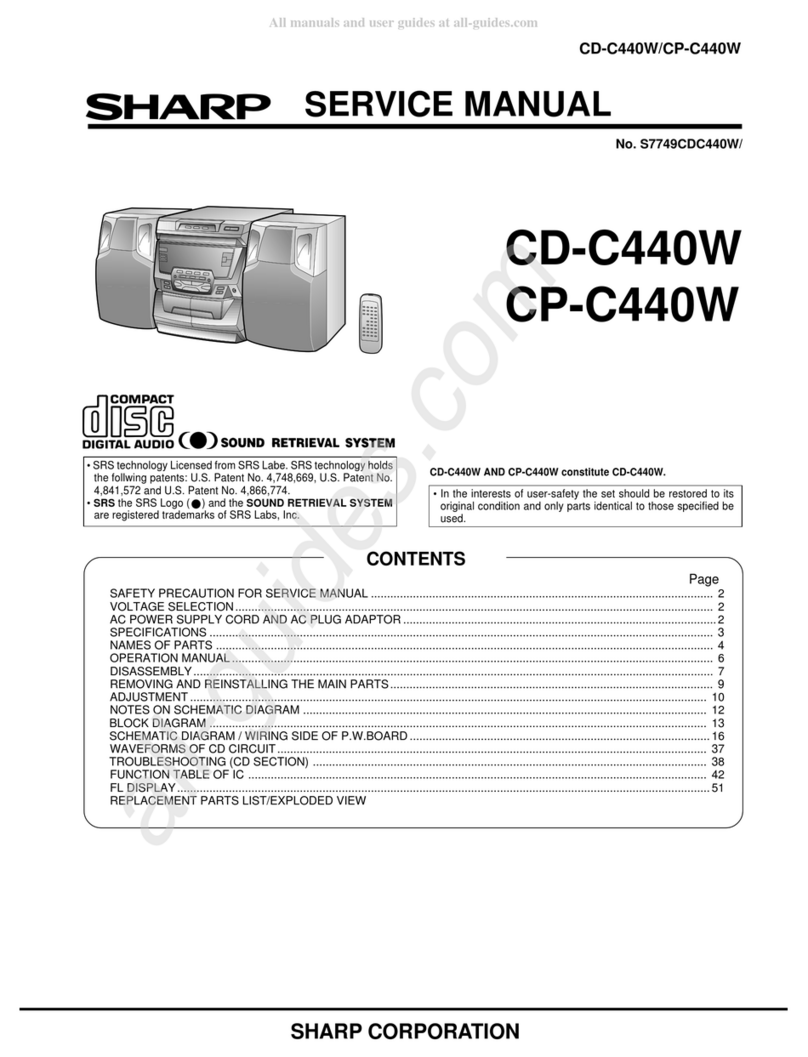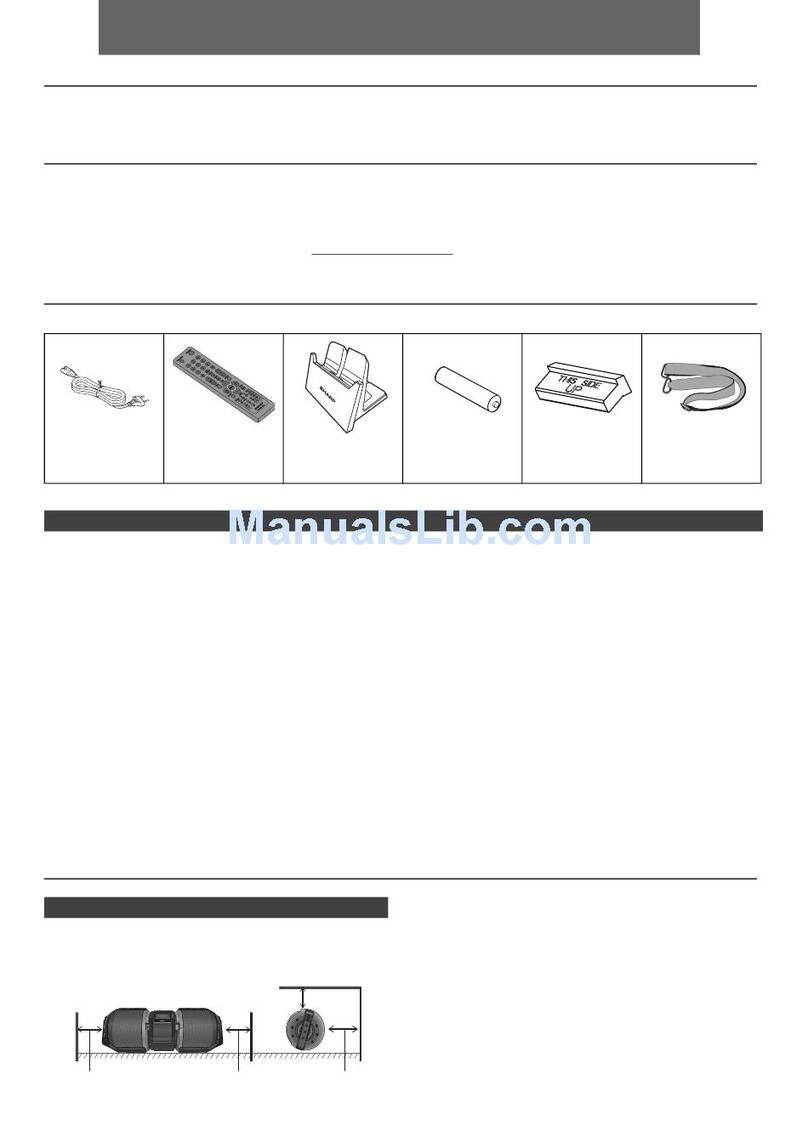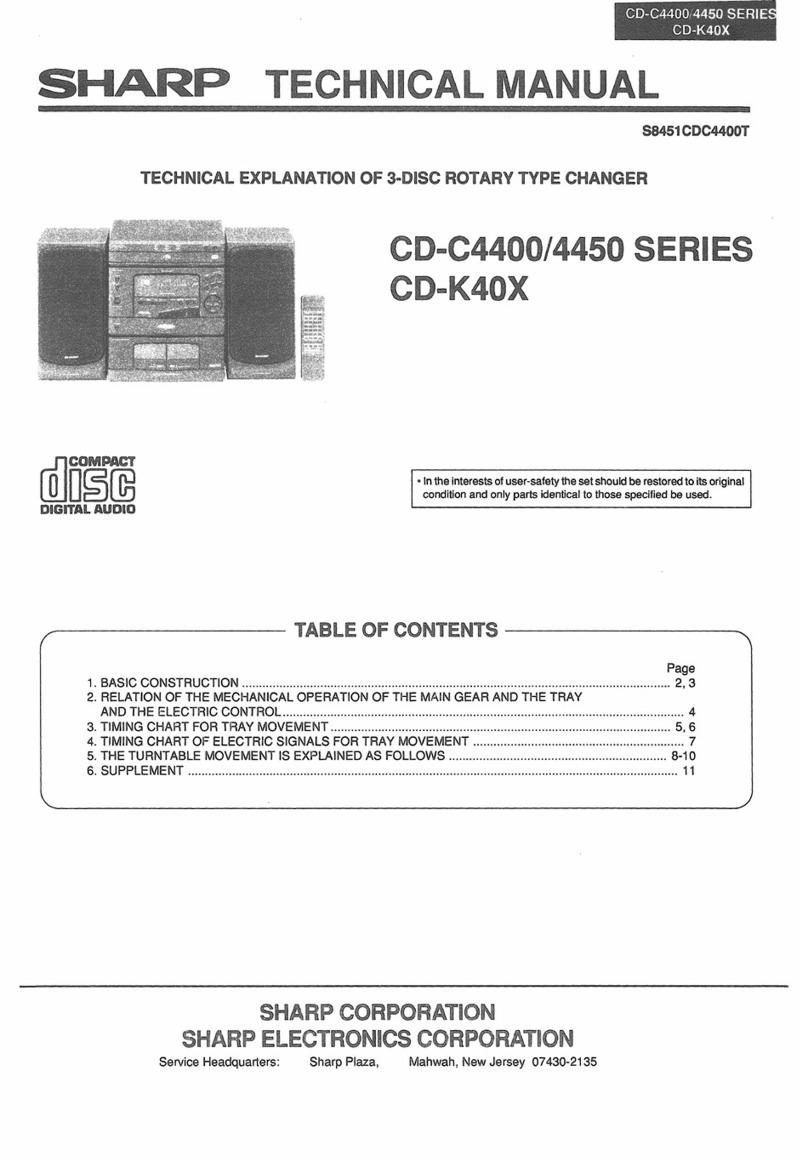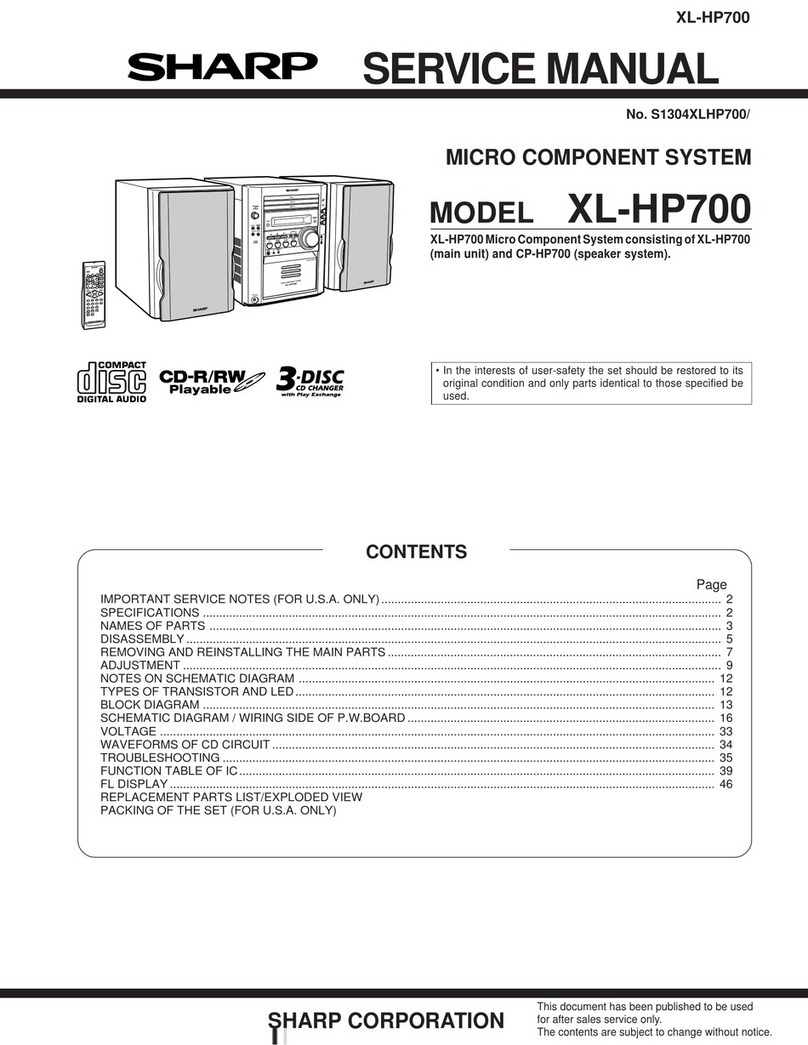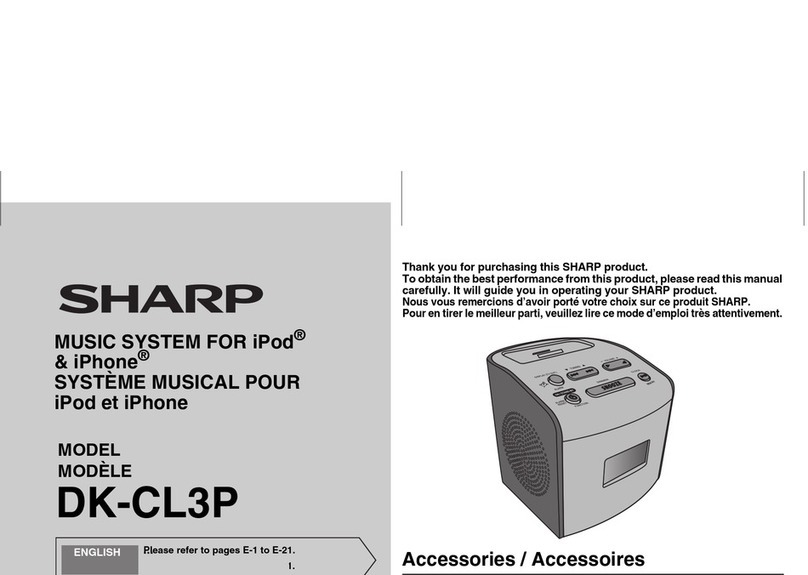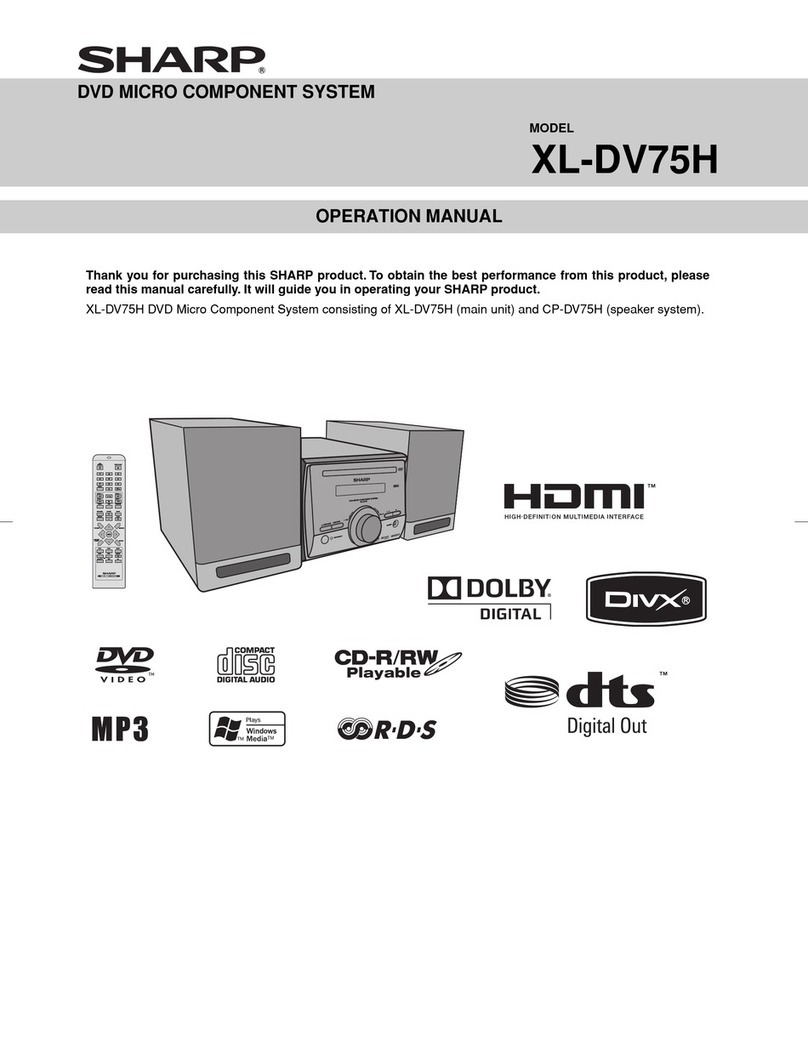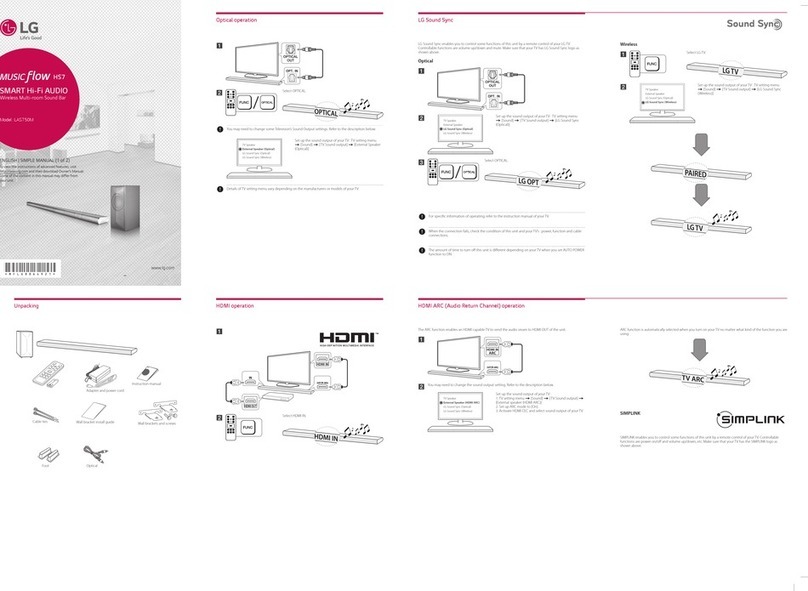
CD-PC671H/PC651H
– 8 –
DISASSEMBLY
Caution on Disassembly
Follow the below-mentioned notes when disassembling
the unit and reassembling it, to keep it safe and ensure
excellent performance:
1. Take cassette tape and compact disc out of the unit.
2. Be sure to remove the power supply plug from the wall
outlet before starting to disassemble the unit.
3.Take off nylonbands or wire holders wherethey need to
beremovedwhendisassemblingtheunit.Afterservicing
theunit, be sureto rearrange the leads wherethey were
before disassembling.
4. Take sufficient care on static electricity of integrated
circuits and other circuits when servicing.
Figure 8-2
Figure 8-3
CD-PC671H/651H
1 Top Cabinet 1. Screw ..................... (A1) x4 8-1
2 Side Panel 1. Screw ..................... (B1) x8 8-1
(Left/right)
3 CD Player Unit/ 1. Turn on the power supply, 8-2
CD Tray Cover open the disc tray, take out
the CD cover, and close.
(Note 1)
2. Hook....................... (C1) x3
3. Hook....................... (C2) x2
4. Socket .................... (C3) x3
5. Screw ..................... (C4) x2
4 Back Board 1. Screw ..................... (D1) x8 8-2
(with Tuner PWB/ 2. Socket .................... (D2) x2
Digital Output PWB)
5 Main PWB 1. Socket .................... (E1) x2 9-1
2. Flat Cable............... (E2) x1
3. Flat Wire................. (E3) x1
4. Tip Wire.................. (E4) x1
6 Power PWB 1. Screw ..................... (F1) x4 9-1
2. Socket .................... (F2) x4
3. Holder PWB ........... (F3) x5
7 Front Panel 1. Screw ..................... (G1) x2 9-1
8 Display PWB/ 1. Screw ..................... (H1) x13 9-2
Switch PWB
2.
Support Bracket ..... (H2) x1
Headphones PWB
9 Tape Mechanism 1. Open the cassette holder. 9-2
2. Screw...................... (J1) x6
3. Socket .................... (J2) x1
10 Turntable 1. Screw ..................... (K1) x1 9-3
2. Cover ..................... (K2) x1
11 Disc Tray 1. Screw ..................... (L1) x2 9-3
2. Guide ..................... (L2) x2
12 CD Servo PWB 1. Screw ..................... (M1) x1 9-4
(Note 2) 2. Socket .................... (M2) x4
13 CD Changer 1. Screw ..................... (N1) x4 9-5
Mechanism
14 CD Mechanism 1. Screw ..................... (P1) x1 9-5
STEP R EMOVAL PROCEDURE FIGURE
Note 1:
How to open the changer manually. (Fig. 8-3)
1. Change, turn fully the lock lever in the arrow direction
throughtheholeontheloadingchassisbottominthisstate.
After that, push forward the CD player base.
Note 2:
1.Afterremoving the connector fortheoptical pickup from the
connector, wrap the conductive aluminium foil around the
front end of connector to protect the optical pickup from
electrostatic damage.
Figure 8-1
LOCK
LEVER
(D1)x5
ø3x10mm
(D2)x1
(D2)x1
(D1)x3
ø3x10mm
Back Board
CD Tray Cover
Main PWB
CD Player
Unit
Hook
( C1) x3
(C2) x1
(C4) x1
ø3x10mm (C4) x1
(C3) x3
1
1
2
Pull
(C2) x1
CD-PC671H/651H
Top Cabinet
(A1)x2
ø3x12mm
(A1)x2
ø3x12mm
Side Panel
(Left)
(B1)x2
ø3x8mm
(B1)x2
ø3x10mm
(B1)x4
ø3x10mm
Back Board

